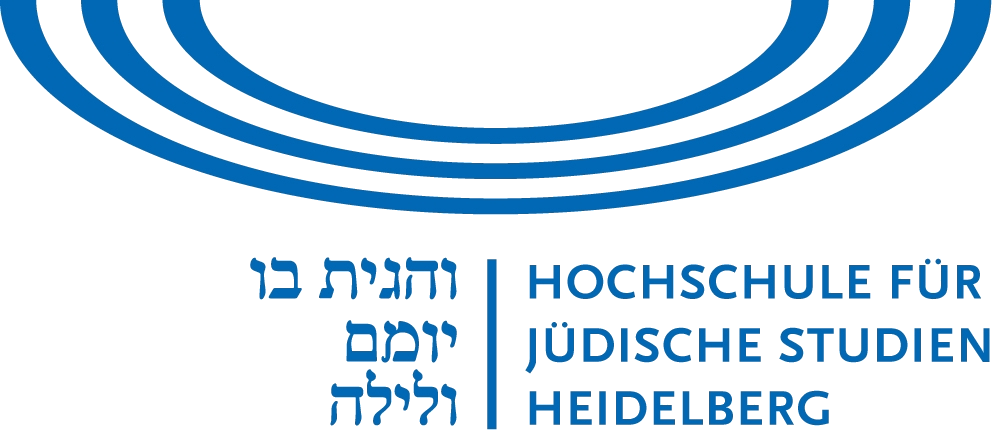Anett Rózsa

|
|
A03
UP1
|
|
Egyptology Telephone: +49 (0) 6221/ 542537 |
SFB 933 "Materiale Textkulturen",
Sub-Project A03-UP1 "Ägyptische Praktiken zur Gewinnung von Gunst"
Address
Ruprecht-Karls-Universität Heidelberg
Ägyptologisches Institut
Voßstraße 2 (building 4410)
69115 Heidelberg
Education
- 2015 B.A. in Egyptology, Eötvös Loránd University (Budapest, Hungary)
- 2017 M.A. in Egyptology, Heidelberg University
- 2018–present Research fellow, Collaborative Research Centre 933 (CRC 933) Material Text Cultures (MTK) / Heidelberg University
Professional Experience
- 19.07.2012-27.07.2012: Volunteers at a Hungarian excavation (Budakalász, medieval church)
- 11.02.2014-31.01.2015: Tour guide in Museum of Fine Arts in Budapest, in the Egyptian Collection
- 04.05.2014-11.05.2014: Research of BA thesis with "Campus Hungary Short Term Study Program" (Staatsbibliothek zu Berlin)
- 11.03.2015-30.09.2018: Employee at "The Campbell Bonner Magical Database" (Museum of Fine Arts in Budapest, Antique Department)
- 14.03.2016-13.04.2016: Excavation in Eisenberg (Roman Vicus Eisenberg); University of Heidelberg, Institute of Classical Archeology
- 01.09.2016-31.05.2018: HIWI in the library of the Egyptological Institute, Heidelberg
- 10.10.2017-05.01.2018: Museum internship at the Collection of Classical Antiquities, Museum of Fine Arts, Budapest
- 03.2018-until today: Tourist guide at “Staatliche Schlösser und Gärten Baden-Württemberg”
Publications
- Rózsa, A. (2020) “Gesundheit, Wohlstand und Liebe. Das Sonnenkind auf den Magischen Gemmen”. In: Antike Welt 3/20, 66–70.
- Rózsa, A. forthcom. (2023). “Magical gems and their importance for Ancient Studies – Some ‘interdisciplinary’ remarks, problems, and pitfalls”. In: Gemmae: an international journal on glyptic studies.
- Rózsa, A. forthcom. „‘Pshai, the god of the gods’ in the Graeco-Egyptian Magical Papyri / Is it possible to change one's fate? In: StudPAP.
- Rózsa, A. et al. 2023. „Kapitel 2: Layout, Gestaltung, Text-Bild.“ In: Dietrich, N. & Lieb, L. & Schneidereit, N. (eds.), Theorie und Systematik materialer Textkulturen, Berlin/Boston/München.
- Rózsa, A. et al. 2023. „Kapitel 5: Sakralisierung.“ In: Dietrich, N. & Lieb, L. & Schneidereit, N. (eds.), Theorie und Systematik materialer Textkulturen, Berlin/Boston/München.
- Quack, J. F. & Rózsa, A. (eds.). forthcom. Verrätselung von Geschriebenem. Philippika 175, Wiesbaden.
Conference talks and other lectures
- 06/2023 „When I came into being, the existence came into being” / The χαβραχ-logos in Papyri Graecae Magicae and on magical gems, international colloquium, “Voces Magicae and the power of the unintelligible”, [online, planed with a publication in Trends in Classics]
- 03/2023 Metatext, 10. deutscher Papyrologentag, Heidelberg, tandem presentation with P. Schweizer-Martin (Medieval History)
- 02/2023 Some remarks on the ‘Bes-Pantheos’ / ‘Polymorph’ figure on magical gems, international symposium, “The sources of the engravers: Magical gems in a history of image transfers”, Fribourg [planed with a publication in RGRW (Brill)]
- 07/2022 ‘Psoi, God of all Gods’ in the Graeco-Egyptian magical papyri / Can destiny be avoided or not?, XXXth International Congress of Papyrology, Paris [planned with publication in StudPAP]
- 03/2022 Favor gaining spells and rituals (general charitesia) with the ‚Solar God’, Materiality, Layout and Formulas: Detecting Patterns in Written Artifacts from Egypt, Heidelberg
- 11/2021 Magico-medical gems and their importance for Ancient Studies, international conference for doctoral students with research on magical topics, University College London
- 06/2021 ‘Put the womb of NN to its proper place as (you move) the solar disk!’/ A child deity on the so-called uterus gems, Apotropaia and Phylakteria – Confronting Evil in Ancient Greece, Athens [online]
- 05/2021 Harpocrates vs. The Solar Child. The roles of the Egyptian child deities on a lotus/in a boat (in private, magical practices), Current Research in Egyptology (CRE) 2021, Rhodes [online]
- 02/2020 Kindermedien in Ägypten als Vermittler zwischen Diesseits und Jenseits, „Schrift aus dem Jenseits“ organized by Beatrice Trînca, Heidelberg University, CRC 933
- 07/2019 “Harpokrates“ in einem Tierkreis auf Magischen Gemmen, 51st Ständige Ägyptologenkonferenz (SÄK), Basel
- 01/2019 Magical gems to gain favor, a presentation with classical philologist Barbara Takács, “Antike Welten – Moderne Perspektiven”, Freiburg
Workshop organization
- 03/2022 “Materiality, Layout and Formulas: Detecting Patterns in Egyptian Written Artifacts” (CRC 933, Heidelberg), 10th–12th March 2022, together with the Papyrology Department
Project description
The pursuit of success has always been an important drive of human action. Self-success, popularity, happiness, wealth and love are human desires. Humans have sought to achieve these ideals through various means including competing with each other.
This subproject will be a continuation of the second funding phase, reviewing its theories, questions, methods and results, etc., and re-analysing (magical) practices against opponents. In the second phase the focus was on the public enemy rituals of annihilation, while in the third phase private practices of gaining favour are going to be at the center of research. One way to outdo rivals is to cause them to fail a task or commit a social or religious taboo. In the antiquity, they resorted to enchantments and magical means. There were various sayings and objects that aim to damage the opponent.
In Egypt, an indirect path was often chosen by using techniques that would lead the rivals to a social or cultic taboo, thus expelling him from divine favour and society. Only a person, who was adapted to social and cultic requirements, in a religious sense, a “Pure” person, could hope for the assistance of the gods. In the analysed sources, there are invitations to Egyptian, Greek, Jewish, etc. deities, and they were used to gain favour by means of higher powers or beings.
In addition, one could enhance the magical power with various amulets, substances and plants. A major goal of this subproject is to analyse the archaeological artefacts with their “Changing materialisation” from the New Kingdom, Late-Period, Graeco-Roman, and Christian-Coptic periods, with some Arab-medieval and Jewish sources. These artefacts included numerous actions of processes, such as intonation, copying, reading, listening, reusing, etc., which should also be considered.
These practices, texts and objects, which were initially reserved for the (oldest) Egypt, were passed on and mixed with "Foreign" or “Supraregional” elements in the Mediterranean from the Late Period and in Graeco-Roman times. The artefacts appear in different contexts, impressing each other in a transcultural and multicultural milieu. These artefacts and their practices were always perceived differently and had new (possible) cultural meanings in various material textual cultures.
Among the artefacts for gaining favour and popularity are many representatives of extensive categories, including: letters, (magical) papyri, (magical) manuals, theoretical works on stones, ostraca, amulets, funeral decoration, temple decoration. With Inscriptions in New Egyptian, Demotic, Greek, Latin and the combination of them (such as multilingual or "Socialised" Texts). This is why they belong to the interdisciplinarity fields of (antiquity) sciences.
The so-called magical gems or finger rings of late antiquity and their Egyptian motives with texts on them for gaining favour and success in every part of life, also make an important part of the corpus: the artefacts with the so-called Patheos, Solar Child, Osiris, etc. will be considered again (quasi as a continuation of the first funding phase and a re-examination of its theories, methods, results etc.). Because of the (mostly) missing archaeological context of the magical gems, it is necessary to gather information from the meta-texts for these magical objects and to complete the real preserved artefacts (i.a. the gems, rings) and their practices with information from the texts.
These artefacts will be examined quantitatively with their (possible) practices, but one will also consider individual punctual practices. As a last step, these traditions for gaining favour and popularity in the Middle Ages were further changed. Although the practices of gaining favour and popularity are already known, their social backgrounds and aspects have not been (sufficiently) researched yet, although important insights into the religious and social structure are expected. This lack of elaboration is to be remedied with the present subproject, also with the main question: How magical practices of favour are linked to the real social and private dimensions of the users?


